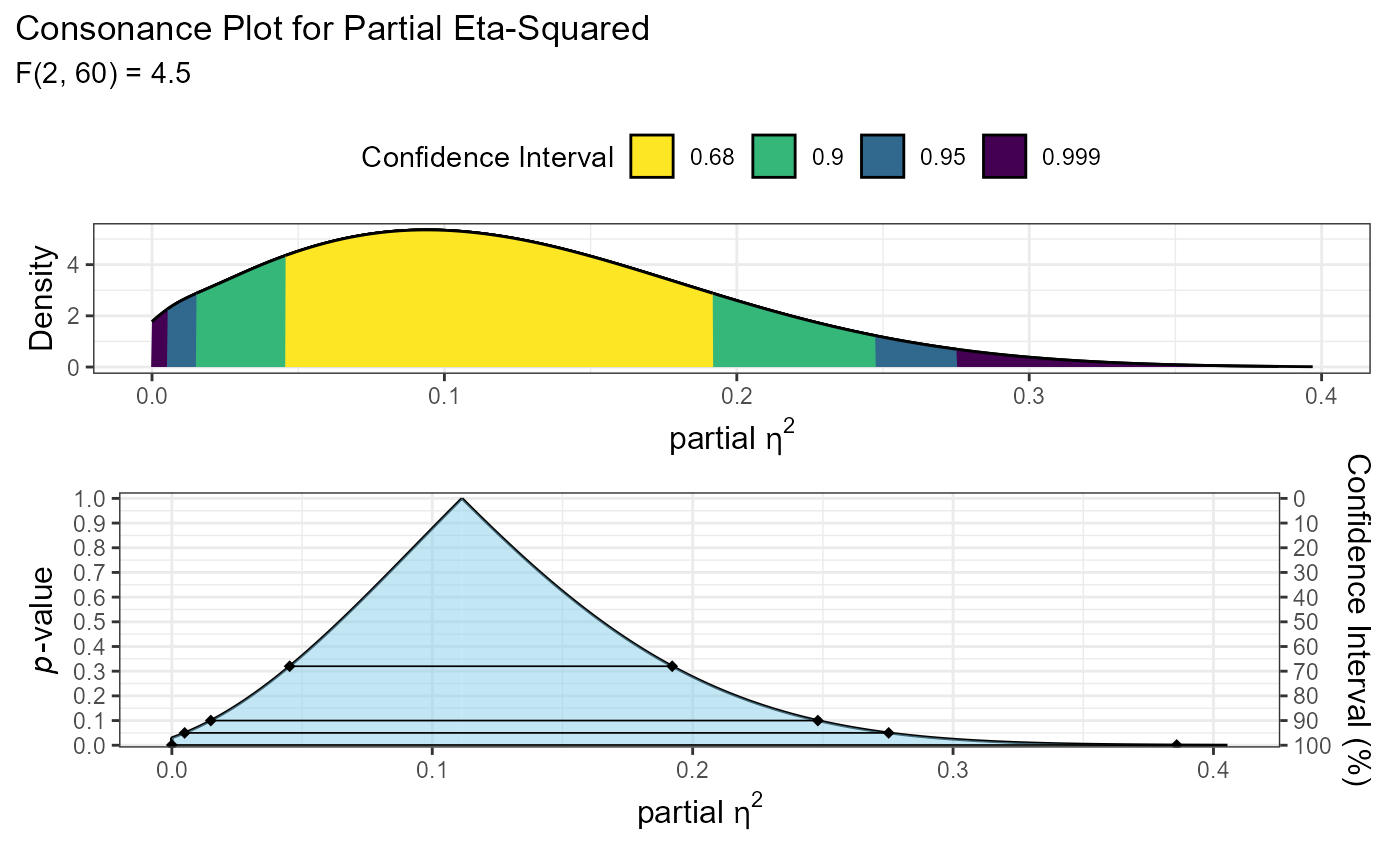Plot Partial Eta-Squared
plot_pes.RdCreates consonance plots (confidence curves and/or consonance density functions) for partial eta-squared values from ANOVA models, allowing visualization of uncertainty around effect size estimates.
Arguments
- Fstat
The F-statistic from the F-test.
- df1
Degrees of freedom for the numerator (effect degrees of freedom).
- df2
Degrees of freedom for the denominator (error degrees of freedom).
- type
Choose which plot(s) to create:
"c": consonance function only (p-values across potential parameter values)
"cd": consonance density function only (distribution of plausible parameter values)
c("c", "cd"): both plots together (default)
- levels
Numeric vector of confidence levels to display (default: c(.68, .9, .95, .999)). These correspond to the confidence intervals shown on the plot.
Details
Consonance plots provide a graphical representation of the full range of confidence intervals for partial eta-squared values at different confidence levels. These plots help visualize the uncertainty around effect size estimates and go beyond the traditional approach of reporting only a single confidence interval (typically 95%).
Partial eta-squared (\(\eta^2\)) is a measure of effect size commonly used in ANOVA, representing the proportion of variance in the dependent variable attributed to a specific factor, while controlling for other factors in the model. Values range from 0 to 1, with larger values indicating stronger effects.
The function creates two types of visualizations:
Consonance function ("c"): Shows how p-values change across different possible values of partial eta-squared. The x-axis represents possible parameter values, and the y-axis represents the corresponding p-values from two-sided hypothesis tests.
Consonance density ("cd"): Shows the distribution of plausible values for the partial eta-squared. This can be interpreted as showing where the "weight of evidence" is concentrated.
These plots are particularly useful for:
Visualizing uncertainty around effect size estimates
Understanding the precision of effect size estimates
Comparing the relative plausibility of different effect sizes
Going beyond the binary "significant vs. non-significant" interpretation
The required inputs (F-statistic, df1, df2) can typically be extracted from standard
ANOVA output in R, such as from aov(), Anova(), or afex_aov() functions.
These types of plots are discussed by Schweder & Hjort (2016) and Rafi & Greenland (2020).
References
Schweder, T., & Hjort, N. L. (2016). Confidence, likelihood, probability: Statistical inference with confidence distributions. Cambridge University Press. ISBN: 9781316445051
Rafi, Z., & Greenland, S. (2020). Semantic and cognitive tools to aid statistical science: Replace confidence and significance by compatibility and surprise. BMC Medical Research Methodology, 20, 244. doi:10.1186/s12874-020-01105-9
Examples
# Example 1: Basic consonance plot for partial eta-squared
# For an F-statistic of 4.5 with df1 = 2, df2 = 60
plot_pes(Fstat = 4.5, df1 = 2, df2 = 60)
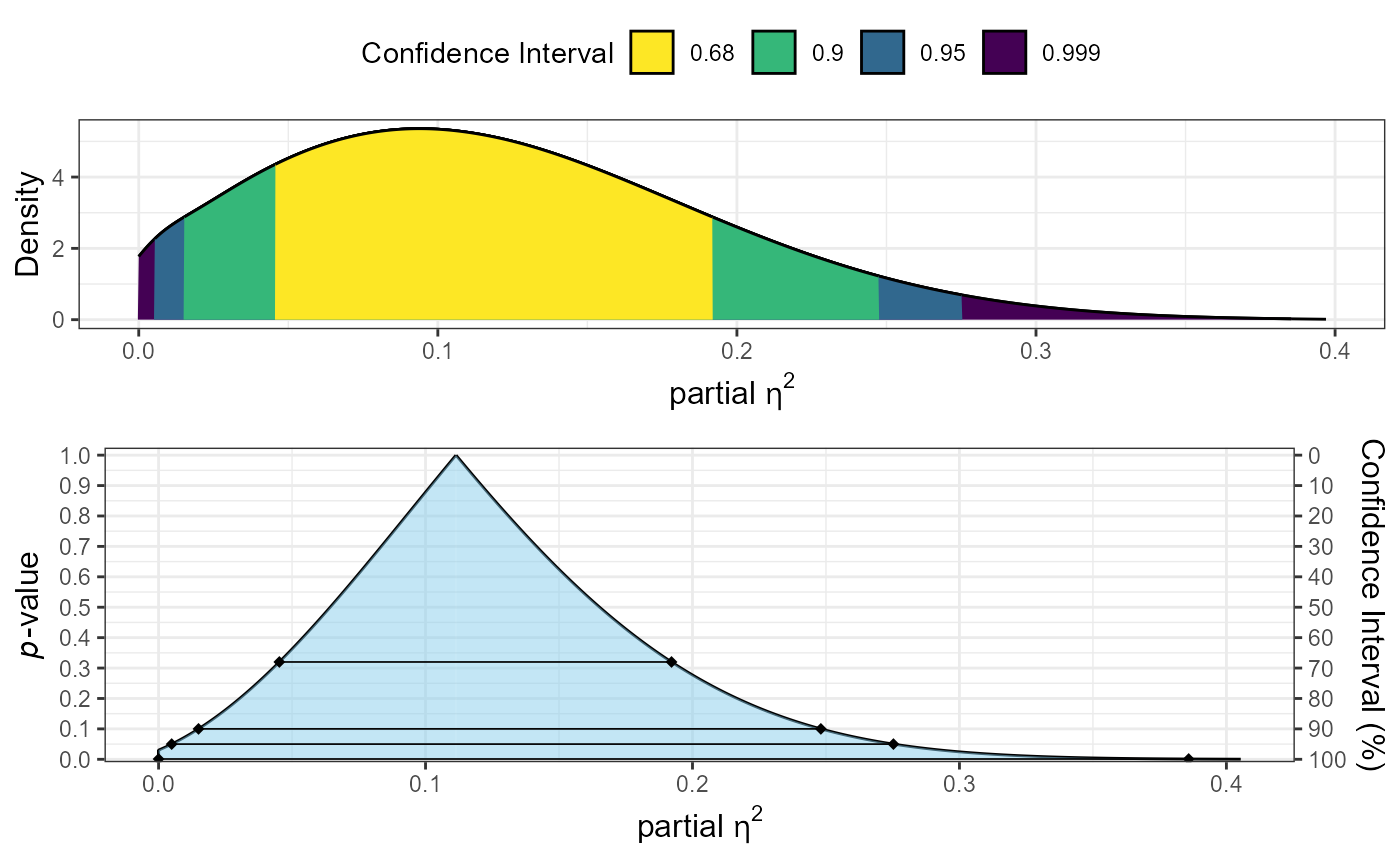 # Example 2: Consonance function only (p-value curve)
plot_pes(Fstat = 3.2, df1 = 1, df2 = 45, type = "c")
# Example 2: Consonance function only (p-value curve)
plot_pes(Fstat = 3.2, df1 = 1, df2 = 45, type = "c")
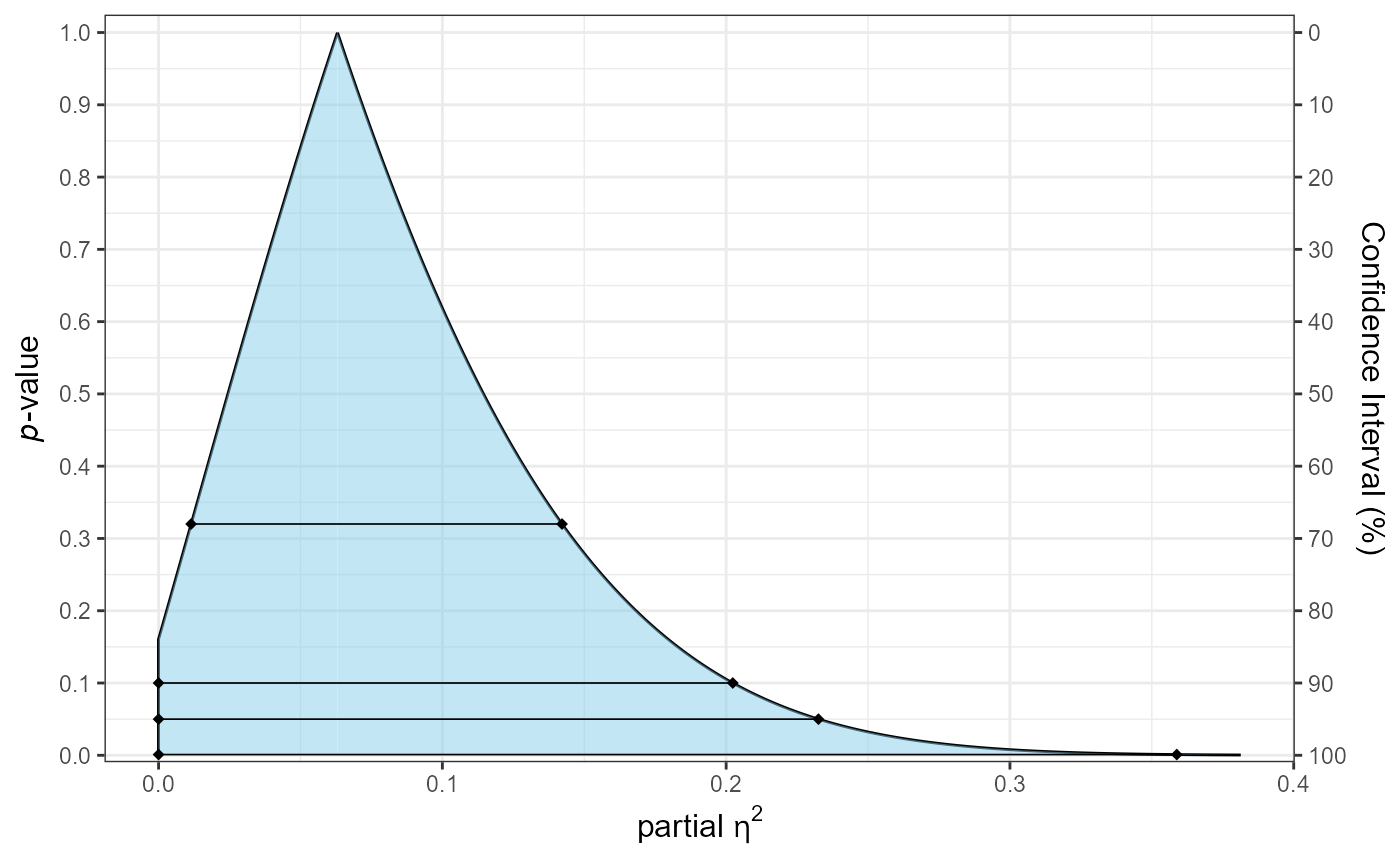 # Example 3: Consonance density only
plot_pes(Fstat = 6.8, df1 = 3, df2 = 80, type = "cd")
# Example 3: Consonance density only
plot_pes(Fstat = 6.8, df1 = 3, df2 = 80, type = "cd")
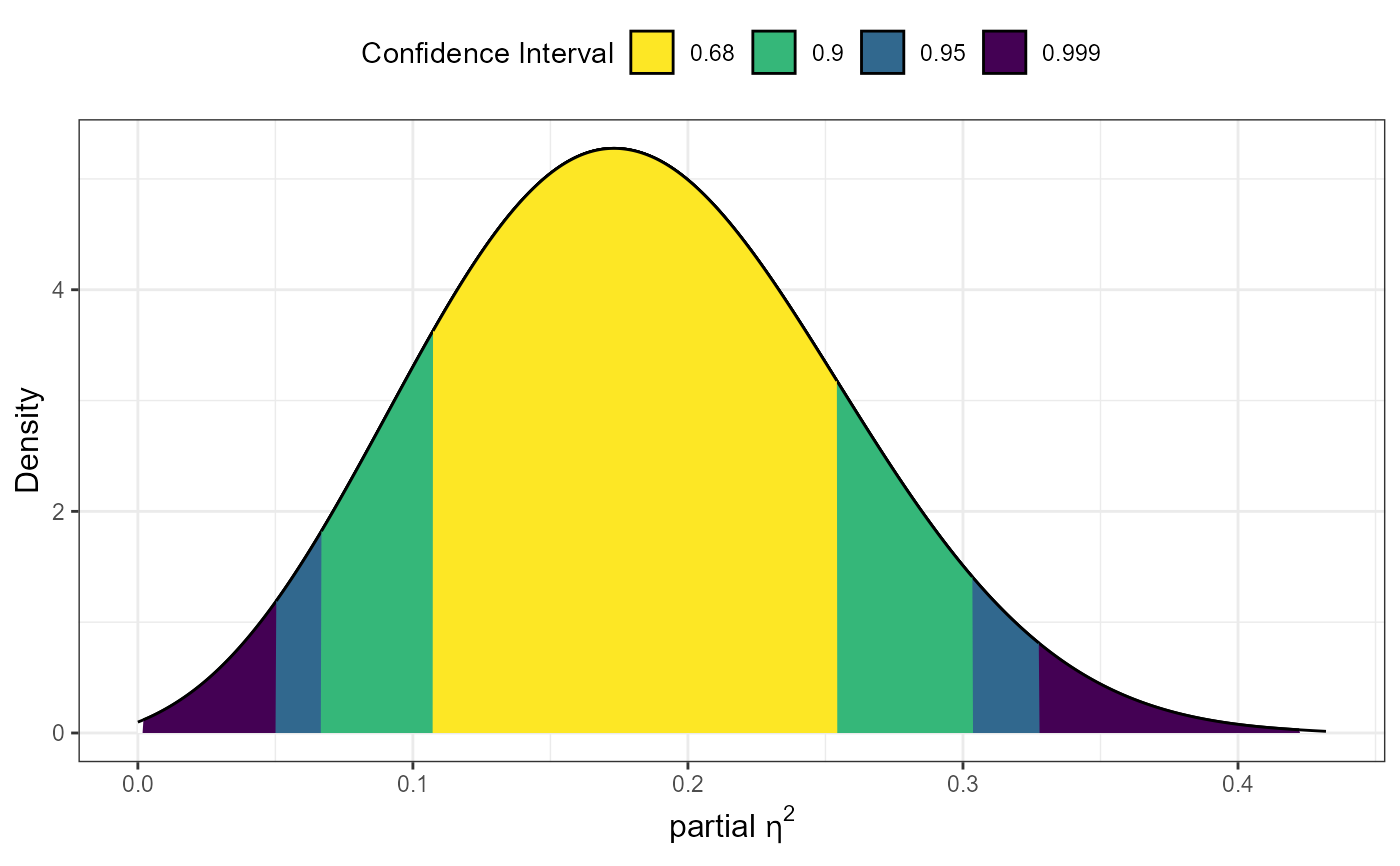 # Example 4: Custom confidence levels
plot_pes(Fstat = 5.1, df1 = 2, df2 = 50, levels = c(0.5, 0.8, 0.95))
# Example 4: Custom confidence levels
plot_pes(Fstat = 5.1, df1 = 2, df2 = 50, levels = c(0.5, 0.8, 0.95))
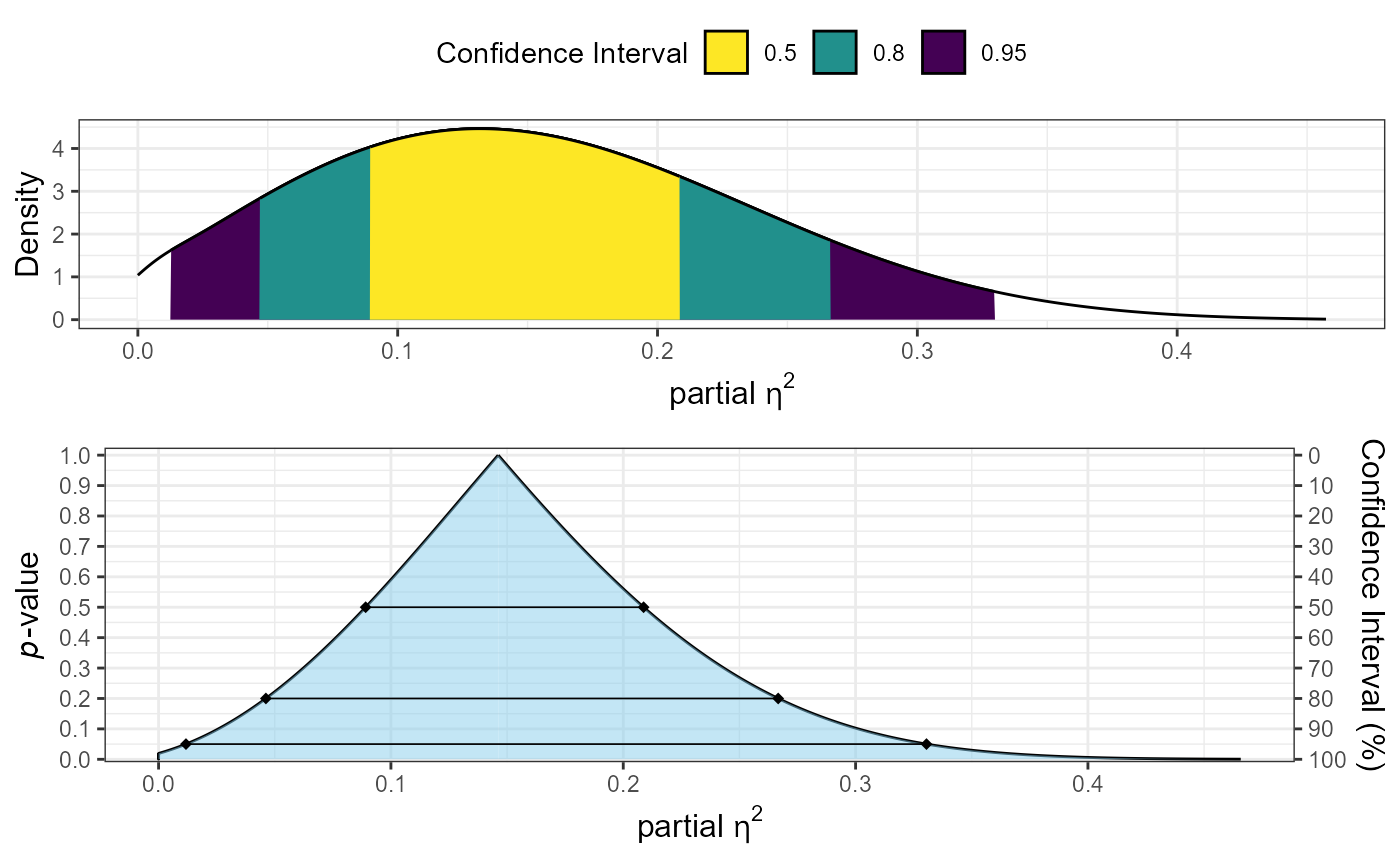 # Example 5: Using with actual ANOVA results
# aov_result <- aov(DV ~ IV, data = your_data)
# aov_summary <- summary(aov_result)[[1]]
# F_value <- aov_summary$"F value"[1]
# df1 <- aov_summary$Df[1]
# df2 <- aov_summary$Df[2]
# plot_pes(Fstat = F_value, df1 = df1, df2 = df2)
# Example 6: Saving and further customizing the plot
library(ggplot2)
p <- plot_pes(Fstat = 4.5, df1 = 2, df2 = 60)
p + theme_minimal() +
labs(title = "Consonance Plot for Partial Eta-Squared",
subtitle = "F(2, 60) = 4.5")
# Example 5: Using with actual ANOVA results
# aov_result <- aov(DV ~ IV, data = your_data)
# aov_summary <- summary(aov_result)[[1]]
# F_value <- aov_summary$"F value"[1]
# df1 <- aov_summary$Df[1]
# df2 <- aov_summary$Df[2]
# plot_pes(Fstat = F_value, df1 = df1, df2 = df2)
# Example 6: Saving and further customizing the plot
library(ggplot2)
p <- plot_pes(Fstat = 4.5, df1 = 2, df2 = 60)
p + theme_minimal() +
labs(title = "Consonance Plot for Partial Eta-Squared",
subtitle = "F(2, 60) = 4.5")
